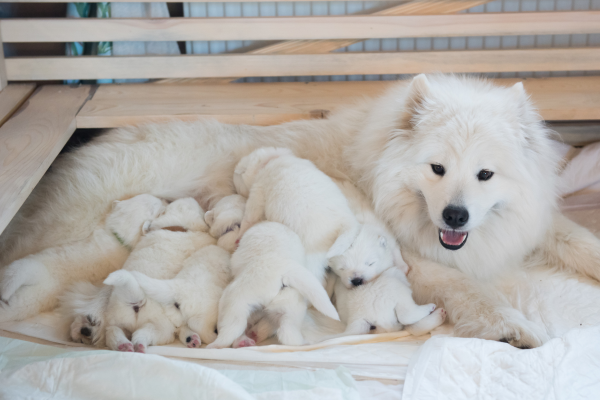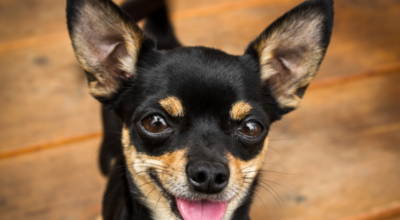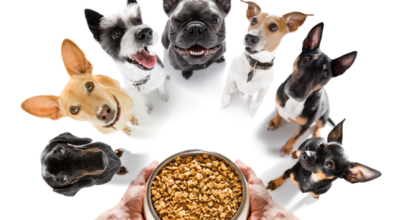When can a Chihuahua get pregnant? This is a fundamental question for pet owners who want to take good care of their furry friends. Even though Chihuahuas are known for being small and active, they have specific reproductive cycles that must be better understood. Being responsible dog owners means learning about the ins and outs of these small dogs’ reproductive systems, how they behave, and the best times to breed them.
This article talks about when a Chihuahua can get pregnant. It also explains the mysteries of their estrous cycle and advises on how to produce responsibly. By learning about their reproductive habits, pet owners can ensure their Chihuahuas are healthy and happy. This will encourage them to be responsible pet owners.
The Reproductive Anatomy of Chihuahuas
Even though they are small, chihuahuas have very complex and well-tuned reproductive systems. Pet owners need to know a lot about their animals’ bodies to make intelligent choices about breeding and their pets’ overall reproductive health.
- Ovaries and Oviducts
- Like other canine breeds, Chihuahuas have a pair of ovaries responsible for producing eggs (ova).
- The oviducts, also known as fallopian tubes, facilitate the transport of eggs from the ovaries to the uterus.
- Uterus
- The uterus is where fertilized eggs implant and develop into embryos.
- Familiarity with the uterus’s structure aids in comprehending the gestation process in Chihuahuas.
- Vagina
- The vagina serves as the birth canal during the delivery of puppies.
- Understanding its role is essential for anticipating the birthing process.
✅Age at Which Chihuahuas Reach Sexual Maturity
- Variability in Maturity Rates
- Like other dog breeds, Chihuahuas exhibit variability in the age at which they reach sexual maturity.
- Smaller breeds tend to mature earlier than larger breeds.
- Typical Onset of Puberty
- Female Chihuahuas typically reach puberty between six and twelve months of age.
- However, this can vary; individual dogs may exhibit signs of heat at different times.
- Importance of Monitoring Signs
- Recognizing signs of sexual maturity, such as behavioral changes and physical developments, is crucial for responsible pet ownership.
✅Explanation of the Estrous Cycle in Chihuahuas
- Estrus or Heat Cycle
- The estrous cycle, often referred to as the heat cycle, is a recurring physiological event in the reproductive life of female Chihuahuas.
- It is characterized by hormonal changes that prepare the dog for potential mating and reproduction.
- Phases of the Estrous Cycle
- Proestrus: The initial phase marked by the preparation of the reproductive system. Female Chihuahuas may exhibit changes in behavior, but they are not receptive to mating.
- Estrus: The fertile phase where the female is receptive to mating. This is the ideal time for breeding.
- Diestrus: If mating does not occur, the female transitions into a non-receptive phase.
- Anestrus: The resting phase, during which the reproductive system is inactive.
- Duration and Frequency
- The estrous cycle typically lasts about three weeks, varying among individual dogs.
- Understanding the frequency and duration of the cycle is crucial for determining optimal breeding times.
By comprehending the female reproductive anatomy and the intricacies of the estrous cycle in Chihuahuas, pet owners can navigate the complexities of breeding responsibly and contribute to the overall well-being of their cherished companions.
Signs of Heat in Female Chihuahuas

Understanding the behavioral shifts in female Chihuahuas during their heat cycle is pivotal for pet owners aiming to recognize and respond to their furry companion’s reproductive needs.
- Heightened Affection
- Female Chihuahuas may display increased affection towards their owners during the early stages of the heat cycle.
- Frequently licking, cuddling, and seeking attention often characterizes this behavior.
- Restlessness
- Restlessness and pacing are common behavioral indicators, especially during the estrus phase.
- The Chihuahua may appear agitated or exhibit a heightened level of energy.
- Changes in Vocalization
- Some Chihuahuas become more vocal during heat, expressing themselves through increased whining, whimpering, or barking.
- These verbal changes are part of their communication during the reproductive cycle.
✅Physical Signs Indicating the Onset of Estrus
- Swelling of Genital Area
- Swelling of the vulva signifies that the Chihuahua is entering the estrus phase.
- Pet owners should regularly check for any noticeable changes in the size and appearance of the genital region.
- Discharge
- During the proestrus phase, there might be a bloody discharge, indicating the beginning of the heat cycle.
- This discharge gradually changes in color and consistency throughout the cycle.
- Attracting Male Attention
- Female Chihuahuas in heat emit pheromones that attract male dogs.
- Increased interest from male dogs in the vicinity and during walks is a clear physical sign that the Chihuahua is in the receptive phase.
✅Duration and Frequency of the Heat Cycle in Chihuahuas

- Typical Duration
- The entire heat cycle in Chihuahuas spans approximately three weeks, but individual dogs may vary.
- Proestrus lasts around 7-10 days, estrus for 4-13 days, and diestrus for 60-90 days.
- Frequency
- The frequency of the heat cycle varies among Chihuahuas and can be influenced by factors such as age, health, and environmental conditions.
- Some Chihuahuas experience two yearly heat cycles, while others may have irregular cycles.
- Optimal Mating Window
- The estrus phase, when the Chihuahua is receptive to mating, is the ideal time for breeding.
- Monitoring the duration and frequency of the heat cycle helps determine the best timing for successful mating.
Pet owners can safely navigate the complicated world of dog reproduction and make intelligent choices about breeding and general care by paying attention to the physical and behavioral signs that female Chihuahuas show when they are in heat.
Determining the Right Time for Breeding

Breeding Chihuahuas is a significant responsibility that requires careful consideration of the timing to ensure the health and well-being of both the female and potential offspring. Understanding the importance of timing is crucial for pet owners who aspire to engage in responsible breeding practices.
- Maximizing Fertility
- Timing is pivotal in maximizing fertility during the female Chihuahua’s estrus phase.
- Breeding during the optimal window increases the likelihood of a successful mating and conception.
- Reducing Health Risks
- Breeding a Chihuahua at the right time helps minimize health risks associated with pregnancy and childbirth.
- Timing also influences the mother’s overall well-being and contributes to the development of healthy and robust puppies.
✅Recognizing the Optimal Mating Window
- Estrus Phase Identification
- The estrus phase is the opportune time for mating as the female Chihuahua is receptive.
- Pet owners should closely observe behavioral changes and physical signs discussed earlier to pinpoint the onset of estrus.
- Monitoring Discharge Changes
- Changes in the color and consistency of the vaginal discharge can serve as additional cues for recognizing the optimal mating window.
- A clear discharge signals the most fertile period for successful breeding.
- Seeking Professional Guidance:
- Veterinarians are crucial in helping pet owners determine the optimal mating window.
- Regular consultations with a veterinarian can provide valuable insights into the Chihuahua’s reproductive cycle and aid in planning for responsible breeding.
✅Factors Influencing Successful Breeding
- Health Assessment
- Before breeding, a thorough health assessment of both the male and female Chihuahuas is essential.
- Ensuring that both dogs are in optimal health contributes to successful reproduction.
- Age Considerations
- The age of the Chihuahua can influence the success of breeding.
- Breeding too early or too late in a Chihuahua’s life can pose risks to the mother’s health and the puppies’ viability.
- Genetic Compatibility
- Understanding the genetic background of both the male and female Chihuahuas is critical for responsible breeding.
- Avoiding genetic issues through informed mate selection contributes to the health and longevity of the offspring.
- Environmental Factors
- The environment in which breeding takes place can impact the success of mating.
- Providing a quiet, stress-free space for the Chihuahuas during the mating process enhances the chances of successful breeding.
Determining the right time for breeding Chihuahuas involves comprehensively understanding their reproductive cycle, recognizing the optimal mating window, and considering various factors influencing successful reproduction. Responsible breeding practices contribute to the health of the Chihuahuas involved and the overall well-being of the entire breeding process.
When Can a Chihuahua Get Pregnant?

Confirming pregnancy in Chihuahuas is crucial for pet owners, paving the way for tailored care and preparation for the upcoming litter.
- Veterinary Consultation
- Seeking professional guidance from a veterinarian is the most reliable method for confirming pregnancy.
- Vets may perform ultrasound examinations or hormone tests to determine if the Chihuahua is expecting accurately.
- Observing Behavioral Changes
- Changes in behavior, such as increased nesting behavior or maternal instincts, can offer preliminary indications of pregnancy.
- However, behavioral changes alone may not be conclusive, necessitating veterinary confirmation.
- Physical Signs
- Physical signs, including changes in nipple size and color, can be observed, but these are not definitive proof of pregnancy. Only a veterinarian can provide accurate confirmation through diagnostic methods.
✅Gestation Period and Physical Changes in Pregnant Chihuahuas
Understanding the gestation period and the physical changes during pregnancy is essential for providing appropriate care to the pregnant Chihuahua.
- Gestation Period
- The average gestation period for Chihuahuas is around 63 days, but it can vary slightly.
- Keeping track of the mating date helps predict the due date and ensures preparedness for the impending arrival of the puppies.
- Physical Changes
- Swollen Abdomen: As the pregnancy progresses, the Chihuahua’s abdomen will gradually enlarge, indicating the presence of developing puppies.
- Changes in Nipple Size: The nipples may become more prominent and darker in color as the Chihuahua prepares for nursing.
- Behavioral Changes
- Increased Resting: Pregnant Chihuahuas may exhibit increased rest as their bodies change significantly.
- Changes in Appetite: Some pregnant Chihuahuas experience alterations in appetite, either an increase or decrease.
✅Proper Care and Nutrition During Pregnancy

Ensuring proper care and nutrition during pregnancy is vital for the health of the pregnant Chihuahua and her developing puppies.
- Balanced Diet
- Transitioning to a high-quality, well-balanced diet for pregnant or nursing dogs is crucial.
- Consultation with a veterinarian can help determine the appropriate nutritional requirements during this phase.
- Regular Veterinary Check-ups
- Regular veterinary check-ups throughout the pregnancy allow for monitoring the health of the Chihuahua and the developing puppies.
- Addressing emerging health concerns promptly is essential for a successful and healthy pregnancy.
- Comfortable Environment
- Providing a quiet, comfortable, and stress-free environment for the pregnant Chihuahua is essential.
- Creating a designated area for nesting and relaxation contributes to the well-being of the mother and the puppies.
- Exercise and Rest
- While moderate exercise is beneficial, excessive physical activity should be avoided.
- Adequate rest is crucial for the pregnant Chihuahua’s overall health and the successful development of the puppies.
Understanding the confirmation of pregnancy, the gestation period, and the physical changes in pregnant Chihuahuas allows pet owners to provide the appropriate care and support needed for a successful and healthy pregnancy.
Regular veterinary consultations, a commitment to proper nutrition, and environmental considerations contribute to the mother’s well-being and the soon-to-arrive Chihuahua puppies.
Responsible Breeding Practices

Engaging in responsible breeding practices is paramount for the well-being of Chihuahuas and the overall canine community. Responsible breeding goes beyond merely pairing dogs for reproduction; it involves careful consideration of genetics, health, and ethical standards.
- Preserving Breed Standards
- Responsible breeding aims to maintain and enhance the qualities that define the Chihuahua breed.
- Breed standards encompass physical attributes, temperament, and overall health.
- Preventing Genetic Disorders
- Thorough screening of breeding pairs helps identify potential genetic disorders.
- Responsible breeders prioritize the health of the offspring by minimizing the risk of hereditary diseases through informed mate selection.
- Reducing Overpopulation
- Irresponsible breeding contributes to pet overpopulation, leading to overcrowded shelters and potential euthanasia.
- Responsible breeders actively work to prevent overpopulation by producing litter with careful consideration of demand and ethical standards.
✅Risks Associated with Early or Frequent Pregnancies

Understanding the potential risks associated with early or frequent pregnancies in Chihuahuas is crucial for pet owners considering breeding.
- Health Risks for the Mother
- Early or frequent pregnancies can lead to health issues in the female Chihuahua, including reproductive complications and strain on her body.
- Responsible breeders prioritize the mother’s well-being, avoiding potential long-term health consequences.
- Developmental Risks for Puppies
- Frequent breeding may compromise the health and development of puppies.
- Responsible breeding involves allowing adequate time between litters to ensure proper care and attention to each set of offspring.
- Increased Risk of Complications
- Frequent pregnancies increase the risk of complications during the birthing process.
- Responsible breeders prioritize the safety of both the mother and the puppies, ensuring a supportive and monitored environment during labor.
✅The Role of Veterinary Guidance in Breeding Decisions

Veterinary guidance plays a pivotal role in responsible breeding, offering professional insights that contribute to the health and well-being of Chihuahuas and their offspring.
- Pre-Breeding Health Checks:
- Veterinary consultations before breeding help assess the overall health and suitability of the breeding pair.
- Thorough health checks contribute to responsible mate selection, minimizing the risk of genetic disorders.
- Monitoring Reproductive Health
- Regular veterinary check-ups during pregnancy enable early detection of any potential complications.
- Veterinary guidance ensures that the pregnant Chihuahua receives proper care and nutritional support throughout gestation.
- Professional Advice on Timing
- Veterinarians provide crucial insights into the optimal breeding timing, considering the female’s reproductive cycle and overall health.
- Responsible breeders rely on veterinary expertise to maximize the chances of successful and healthy pregnancies.
- Post-Breeding Care
- Veterinary support continues after breeding, with postnatal check-ups for the mother and the puppies.
- Responsible breeders prioritize ongoing veterinary care to address emerging health concerns and ensure the well-being of the entire canine family.
Responsible breeding is based on a dedication to the well-being, genetics, and proper care of Chihuahuas. Pet owners can help the Chihuahua breed and make the dog community healthier by understanding the importance of responsible breeding, awareness of the risks of early or frequent pregnancies, and seeking veterinary advice.
✅Caring for Pregnant and Nursing Chihuahuas
Proper nutrition is crucial during pregnancy and lactation to ensure the mother’s and her puppies’ health. Understanding the dietary needs of pregnant and nursing Chihuahuas is essential for responsible pet care.
- High-Quality, Balanced Diet
- Transitioning the Chihuahua to a high-quality, balanced diet specifically formulated for pregnant or nursing dogs is vital.
- Adequate protein, essential vitamins, and minerals support the nutritional requirements during this demanding period.
- Increased Caloric Intake
- Adjusting the Chihuahua’s caloric intake is necessary during pregnancy and lactation to meet the heightened energy demands.
- Consultation with a veterinarian helps determine the appropriate amount of food to support the mother’s health and the growth of the puppies.
- Supplement Consideration
- Some pregnant and nursing Chihuahuas may benefit from supplements, such as prenatal vitamins.
- However, all supplement decisions should be made with a veterinarian to avoid potential complications.
✅Creating a Comfortable and Safe Environment for Pregnant Chihuahuas

Providing a conducive and stress-free environment is crucial for the well-being of pregnant Chihuahuas. A comfortable setting contributes to the health and comfort of the mother and her soon-to-arrive puppies.
- Designated Nesting Area
- Creating a designated nesting area where the pregnant Chihuahua can rest comfortably is essential.
- To reduce stress, this area should be quiet, warm, and free from disturbances.
- Appropriate Bedding
- Soft and supportive bedding helps alleviate the pressure on the mother’s body, especially during the later stages of pregnancy and nursing.
- Regularly cleaning and maintaining the bedding ensures a hygienic and comfortable space.
- Privacy and Security
- Pregnant Chihuahuas may prefer increased privacy and security.
- Providing a secluded space where the Chihuahua can retreat ensures a sense of safety and reduces stress.
✅Monitoring the Health and Well-being of Both Mother and Pups

Vigilant monitoring of the mother’s and her puppies’ health and well-being is essential throughout the pregnancy, whelping, and nursing stages.
- Regular Veterinary Check-ups
- Regular check-ups with a veterinarian are crucial during pregnancy to monitor the health of the Chihuahua and the developing puppies.
- Postnatal check-ups ensure the continued well-being of the mother and the growing litter.
- Observing Nursing Behavior
- Monitoring the nursing behavior of the mother Chihuahua helps ensure that the puppies receive adequate nutrition.
- Intervening if any signs of difficulty or health concerns arise is essential for the well-being of the entire litter.
- Weaning Process
- Implementing a gradual and well-managed weaning process helps transition the puppies to solid food.
- Monitoring the weaning process ensures a smooth transition and supports the health of both the mother and the pups.
- Hygiene and Cleanliness
- Maintaining a clean environment is crucial for preventing infections and promoting the overall health of the Chihuahua family.
- Regularly cleaning the nesting area and monitoring for signs of illness or discomfort is essential.
Pet owners can ensure that pregnant and nursing Chihuahuas have a good time by carefully considering their dietary needs, ensuring they have a comfortable space, and keeping a close eye on their health.
Giving Chihuahua puppies the care they need during this critical time is suitable for the whole dog family and sets the stage for happy, healthy puppies.
When to Avoid Breeding Chihuahuas
Breeding Chihuahuas requires careful consideration and responsible decision-making to ensure the health and well-being of the breeding pair and their potential offspring. Recognizing when to avoid breeding is crucial for responsible pet ownership.
❌Health Considerations for Breeding Chihuahuas

- Pre-Existing Health Conditions
- Chihuahuas with pre-existing health conditions, such as genetic disorders or chronic illnesses, should not be used for breeding.
- Responsible breeders prioritize the overall health of the breeding pair to prevent the transmission of hereditary diseases.
- Reproductive Health Assessment
- Both male and female Chihuahuas should undergo thorough reproductive health assessments before considering breeding.
- Any reproductive abnormalities or health concerns should be addressed with the guidance of a veterinarian.
- Parasite and Disease Control
- Chihuahuas should be free from parasites and infectious diseases before breeding.
- Routine veterinary checks and appropriate preventive measures are essential to maintain the health of the breeding pair.
❌Breeding Age Limits and Potential Risks
- Early Breeding Risks
- Breeding Chihuahuas too early in their lives can pose significant health risks.
- Early pregnancies may lead to complications, including difficulties during labor and an increased likelihood of health issues in both the mother and the puppies.
- Late Breeding Risks
- Breeding Chihuahuas at an advanced age also presents risks.
- Older Chihuahuas may experience reduced fertility, increased likelihood of birthing complications, and potential health issues in the puppies.
- Guidelines for Breeding Age
- Responsible breeders adhere to established guidelines for breeding age, generally waiting until the Chihuahua is at least 18 months old.
- Breeders should also consider the overall health and maturity of the individual dog before allowing breeding.
✅The Ethical Aspects of Breeding and Responsible Pet Ownership
- Avoiding Overbreeding
- Responsible pet ownership involves avoiding overbreeding, which can contribute to pet overpopulation.
- Overbreeding may lead to the neglect of individual dogs and an increased burden on animal shelters.
- Ensuring Responsible Homes
- Ethical breeding includes ensuring that the puppies find responsible and loving homes.
- Conducting thorough background checks on potential owners and providing proper education on Chihuahua care contribute to responsible pet placement.
- Spaying and Neutering Advocacy
- Advocating for spaying and neutering is an essential aspect of responsible pet ownership.
- Responsible breeders actively promote these procedures to prevent unplanned litters and contribute to controlling pet overpopulation.
- Lifetime Commitment
- Responsible breeders recognize that breeding Chihuahuas involves a lifetime commitment to the well-being of the dogs they bring into the world.
- Ethical breeding includes providing ongoing support to puppy owners and being prepared to take back dogs if needed.
Knowing when to avoid breeding Chihuahuas involves:
- A thorough assessment of health considerations.
- Adherence to age limits.
- A commitment to ethical breeding practices.
Responsible pet ownership extends beyond breeding decisions to include the well-being of individual dogs, the prevention of overpopulation, and a lifelong commitment to the health and happiness of every Chihuahua brought into the world.
Conclusion
To conclude, Chihuahua breeding requires knowledge of their reproductive system, behavior, and techniques. Being a responsible pet owner means knowing when to breed, monitoring pregnant or nursing Chihuahuas, and when not to produce.
Knowing how Chihuahuas reproduce helps you breed wisely. This information is needed to care for a Chihuahua’s reproductive health from estrous to sexual maturity.
When female Chihuahuas are in heat, their owners can determine the best time to mate, making breeding easier. Awareness of the mother’s behavior and body changes during pregnancy helps ensure that she and her puppies receive proper care.
Good-for-you pets require responsible breeding. Breeders who care about Chihuahuas and other dogs should prioritize breed standards, combat genetic diseases, and reduce overpopulation.
A pregnant or nursing Chihuahua needs food, a comfortable home, and close health monitoring. You must care for and support the dogs during this phase to ensure the family has fun.
Knowing when not to breed is crucial. Health, age limits, and breeding ethics all affect responsible pet ownership. Stopping overbreeding, supporting spaying and neutering, and requiring lifetime commitments help Chihuahuas and other dogs.
Responsible Chihuahua breeding goes beyond wanting cute puppies. It involves keeping these beloved pets healthy, happy and well-treated. By breeding Chihuahuas with these goals, we can improve the breed and foster responsible pet owners.
Here at ILoveChihuahua, we share our personal experiences as owners of this feisty breed. We talk about recommended methods, dog supplies picks, and advice on common Chihuahua problems. Our goal is to promote responsible dog ownership, so there would be fewer Chihuahuas in shelters.


